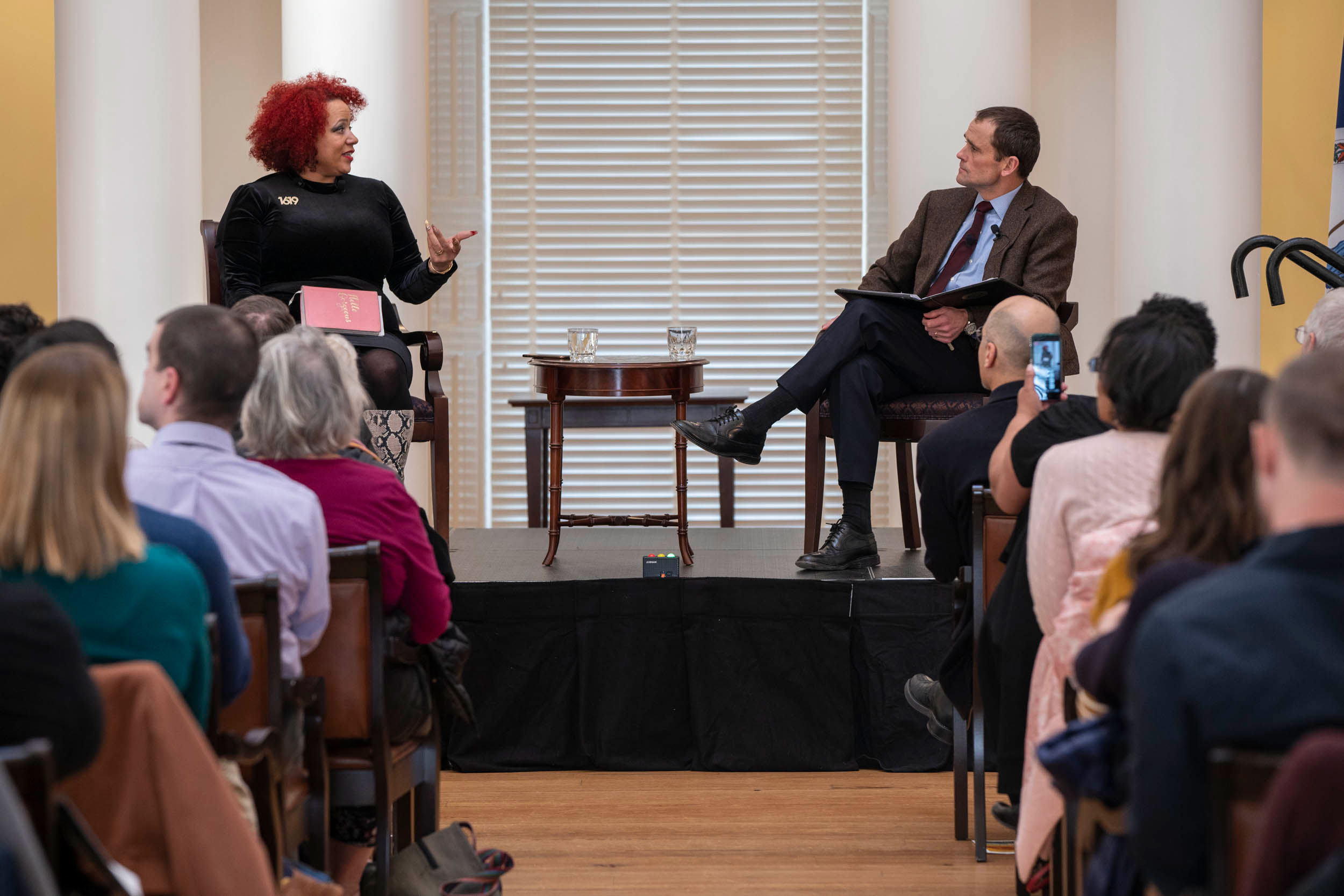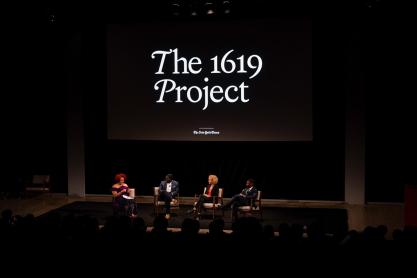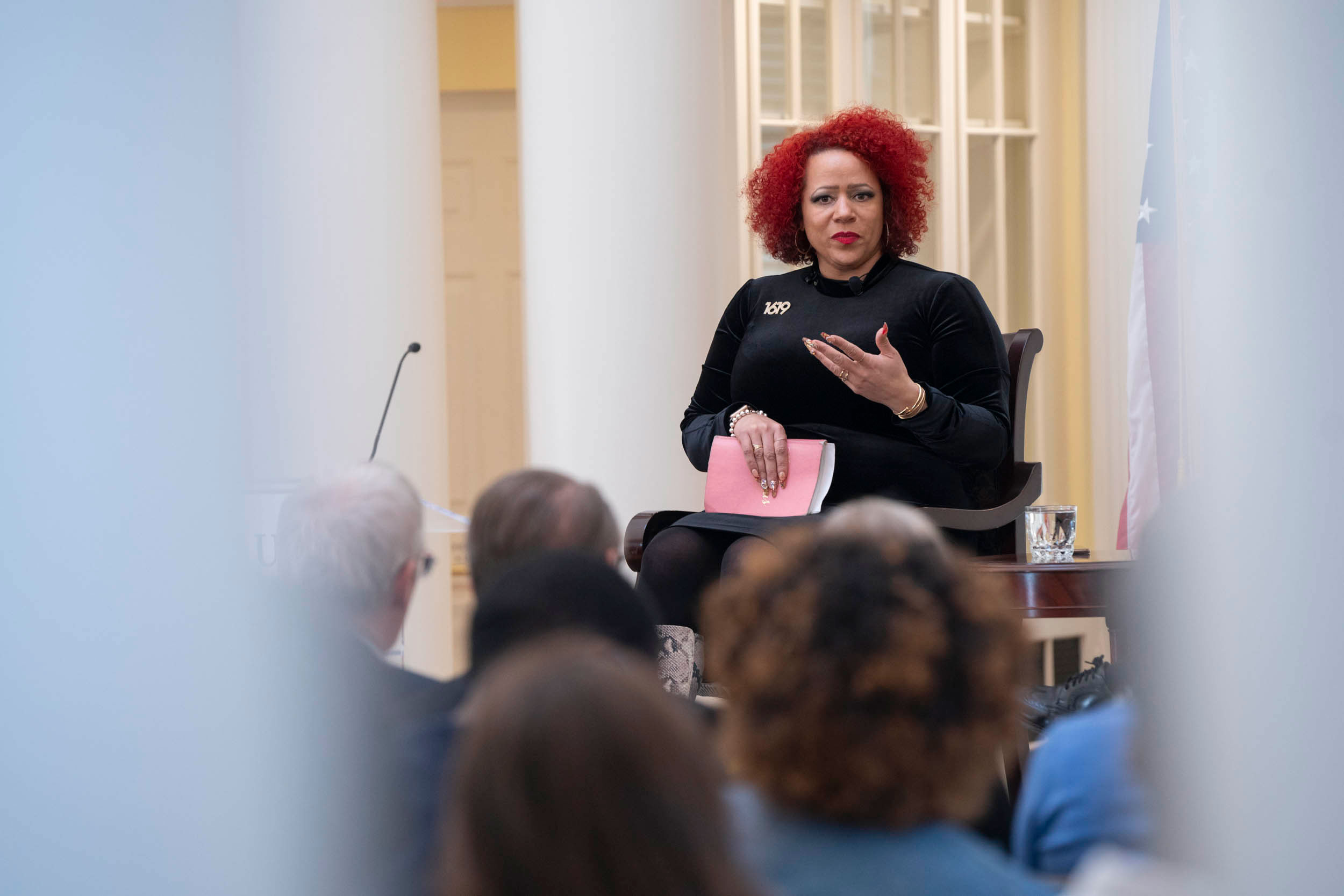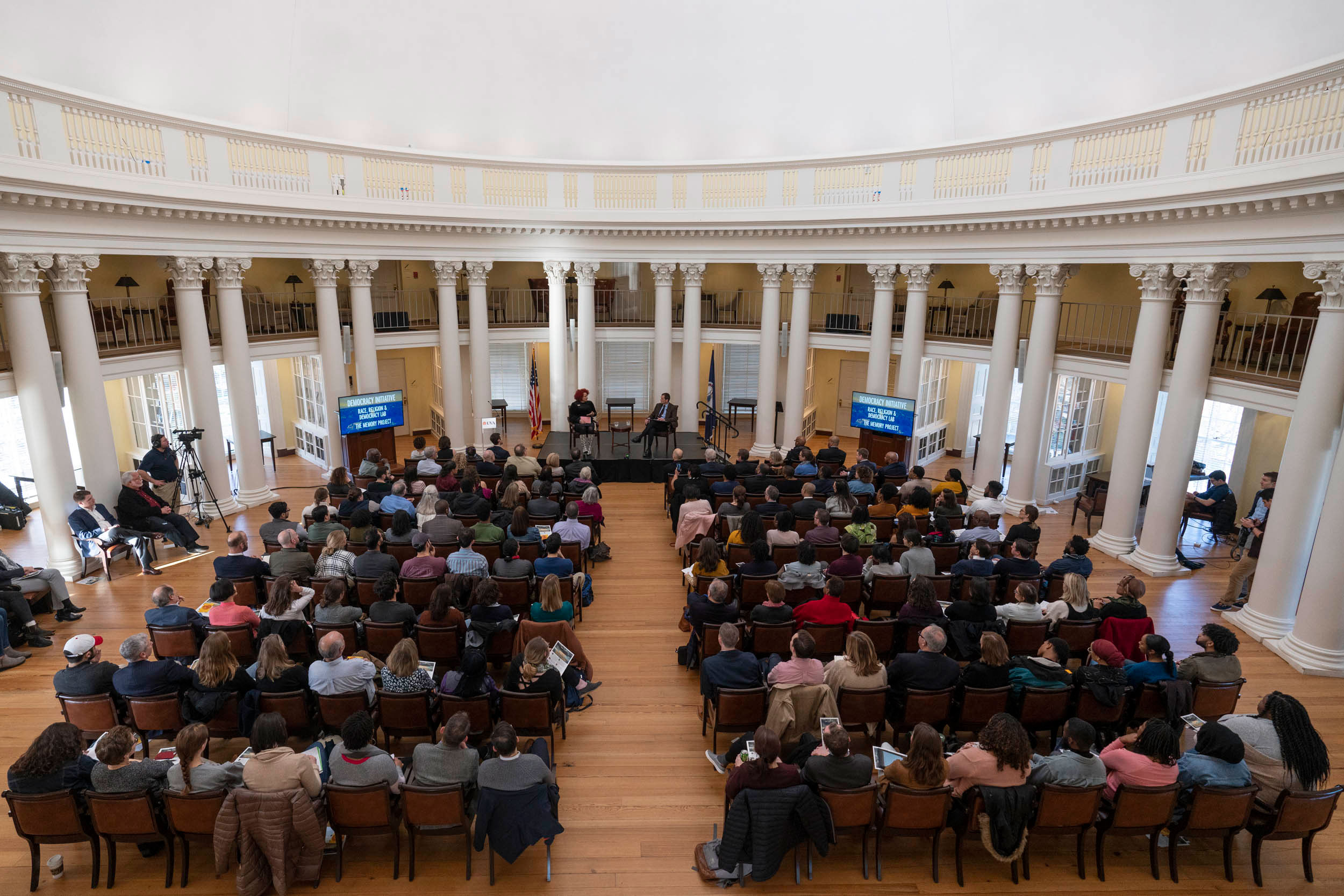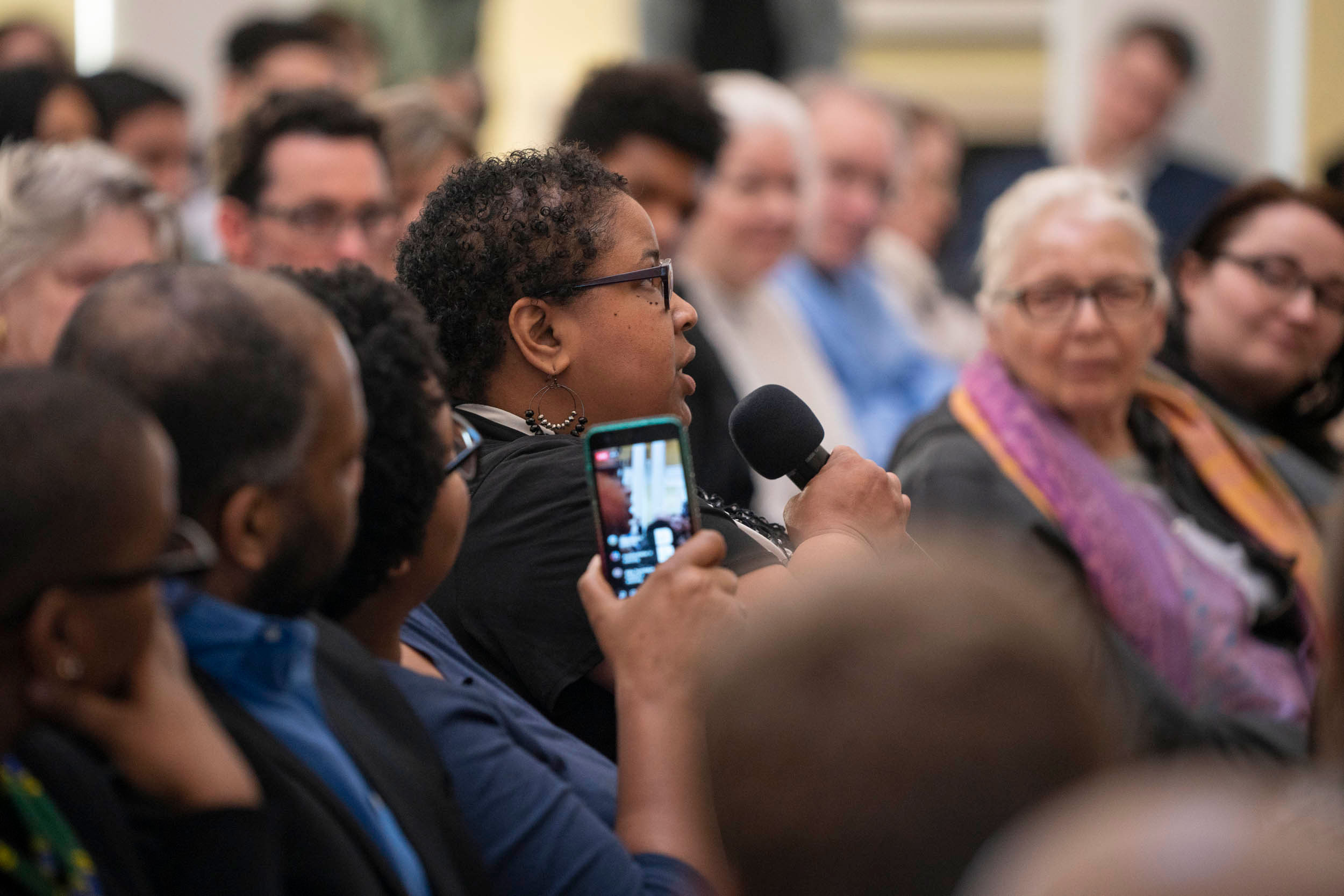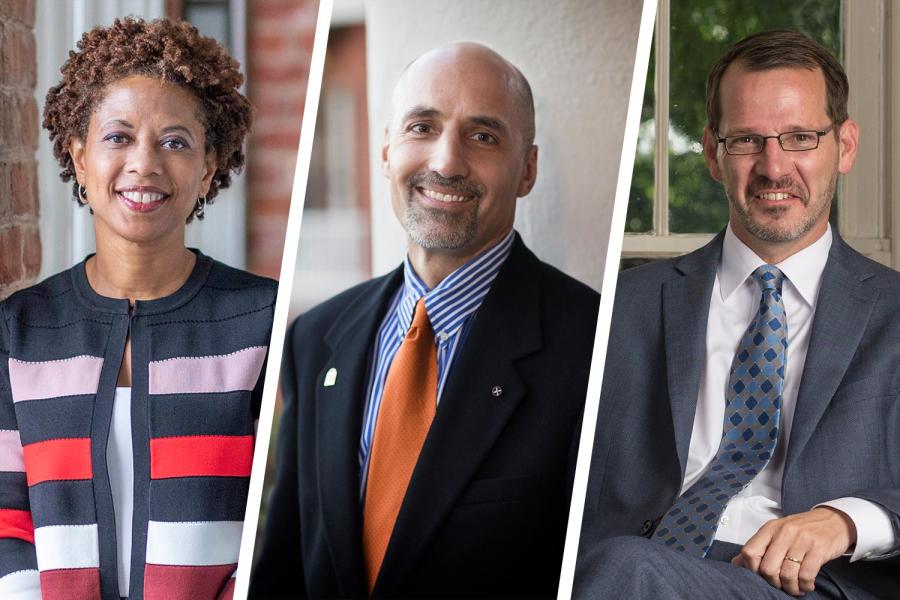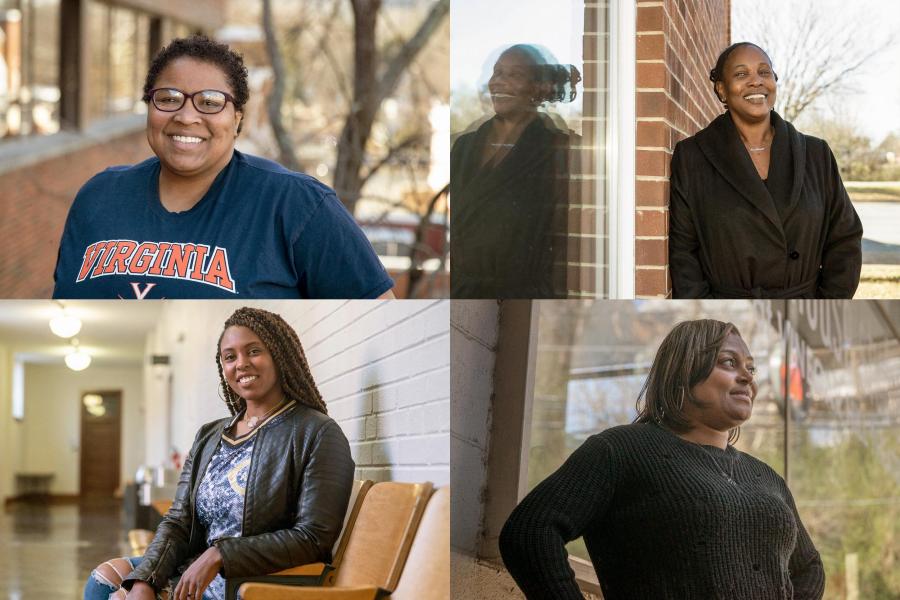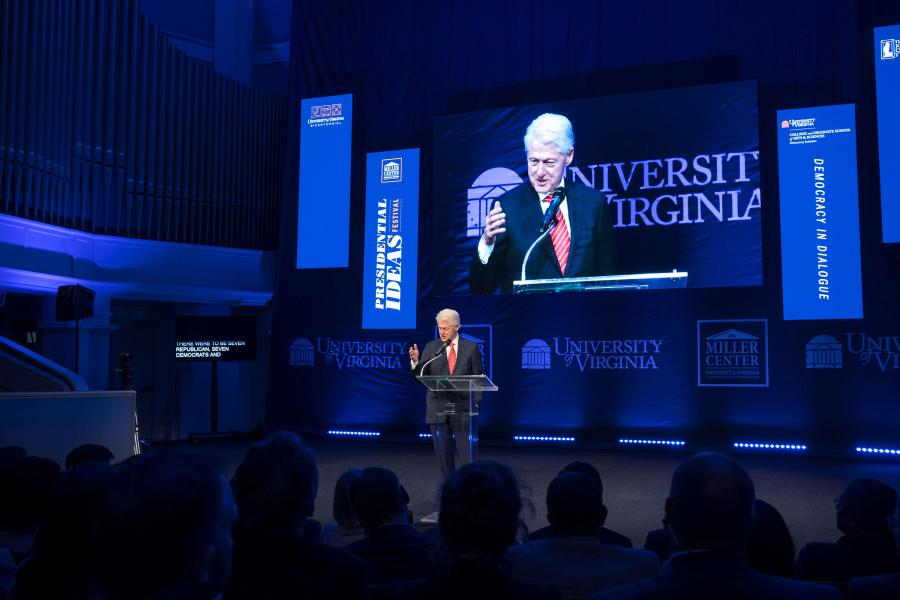As the 400th anniversary of that arrival approached, Jones – by then a writer at New York Times Magazine – pitched an idea to her editors: Let’s put out a magazine and a project devoted to tracing the legacy of that moment in American life.
“I didn’t want it to be just a commemoration, but an acknowledgement of what slavery wrought, and the centrality of slavery, not just looking at history, but at the ongoing, everyday legacy that we all live with,” Hannah-Jones said.
The reaction was immediate and strong. Hannah-Jones talked about how she felt when she saw people lining up to buy the magazine – which sold out the day it became available and then sold out again – and discussed objections raised by a group of historians, including a letter from Princeton historian Sean Wilentz arguing that, for example, Hannah-Jones falsely cited protecting the institution of slavery as a key motivation for independence from Britain.
Asked about that debate, Hannah-Jones noted that she consulted with a range of scholars during the project and attributed some of the objections to unwillingness to leave behind a rosier narrative of the country’s founding.
“There is a big battle amongst historians of the American Revolution right now, and some are still protecting, across ideology, the political story of our founding,” she said. “They want to believe that we had some problems at the beginning, but we are a good country and all of this will work out.”
That view, she said, is fundamentally different from her own view of the country and its progress.
“This is not ancient history for me. I am 43 and I am part of the first generation of black people in the history of the U.S. born into the country with the full rights of citizenship,” she said, noting that her father was born in a shack because African Americans were not allowed to give birth in the local hospital.
“To me, progress is a balm that eases the conscience of those who are the beneficiaries of the system,” she said. “Progress, to me, is insulting when what we should have at this point is equality. That is all I demand, and I am not going to accept anything less.”
The second half of the discussion, as well as an audience Q&A session, largely focused on how issues raised in the 1619 Project have played out at universities, especially at UVA.
Looking out at the Rotunda, and the Lawn beyond, Hannah-Jones said that no visitor should be able to see that landscape without acknowledging how it was built.
